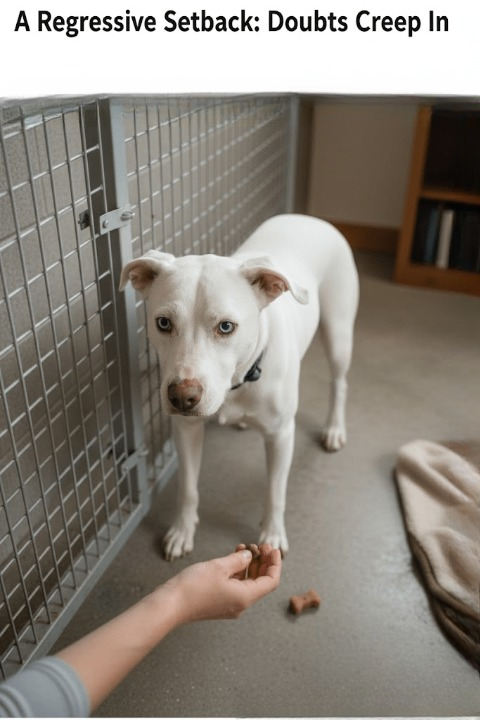The first time I laid eyes on Luna, she was a tiny, trembling ball of white fur, pressed into the farthest corner of her kennel. Her pale blue eyes, stunning in color, were clouded with a fear that seemed far too heavy for her young age. Every sound, every movement, even the softest human voice, made her shrink back against the wall — a testament to a past no animal should endure. The shelter staff knew little about her, only that she had been found abandoned and terrified. Her file listed her extreme timidity, a barrier that had discouraged countless potential adopters. One volunteer had scribbled on a sticky note: “She flinches at every touch, but her heart still whispers for a second chance.” It would take 420 days — 420 days of quiet persistence, gentle gestures, and unwavering patience — for Luna to grasp what it truly meant to feel safe. Her story, full of setbacks and tiny triumphs, would become a legend among the volunteers, a testament to the power of consistent compassion.
At first, connecting with Luna was nearly impossible. She pressed herself against the back wall of her kennel, body stiff, eyes wide with apprehension. Treats, soothing words, even simply sitting quietly nearby — nothing could breach the fortress of fear she had built. The shelter’s lead behavioral specialist, Sarah, suggested a bold plan: one dedicated volunteer working with Luna daily, slowly building trust, step by agonizing step. I volunteered, drawn by the raw vulnerability in her gaze, a silent plea for understanding.
The first month was an exercise in patience. I would sit outside her kennel, reading aloud in a soft monotone, avoiding direct eye contact. Occasionally, I left a high-value treat just inside the door and stepped away, watching as she cautiously crept forward to snatch it. Some days, Luna seemed frozen in place, refusing to even acknowledge me. Doubt gnawed at me — was I helping, or only prolonging her fear?
Then, on day 78, a breakthrough arrived. I was sitting, reading as usual, when Luna did something unexpected: instead of cowering, she lay down, watching me. I continued reading, pretending not to notice. Slowly, she took a tentative step forward, then another, until she reached the threshold of her kennel. She sat there quietly, observing rather than fleeing. It was a small gesture, but it felt monumental.
Over the following months, progress came in fragile waves. Luna went from simply observing me to cautiously taking treats from my hand — always snatching and retreating, but inching closer each time. Then came the first fleeting brush of her fur against my fingers, a tiny, almost imperceptible contact that felt like a triumph of a lifetime. Even the initially skeptical shelter manager began to notice subtle changes in Luna’s demeanor.
But the journey was never linear. On day 210, a new volunteer, unaware of Luna’s careful routine, attempted to pet her too quickly. Luna snapped and growled — a violent reaction we hadn’t seen in months. Progress felt undone. She withdrew, cowering, refusing eye contact, and it was heartbreaking. For weeks, I returned to the basics: quietly sitting with her, rebuilding trust one slow, patient step at a time. It was grueling, but giving up was never an option.
